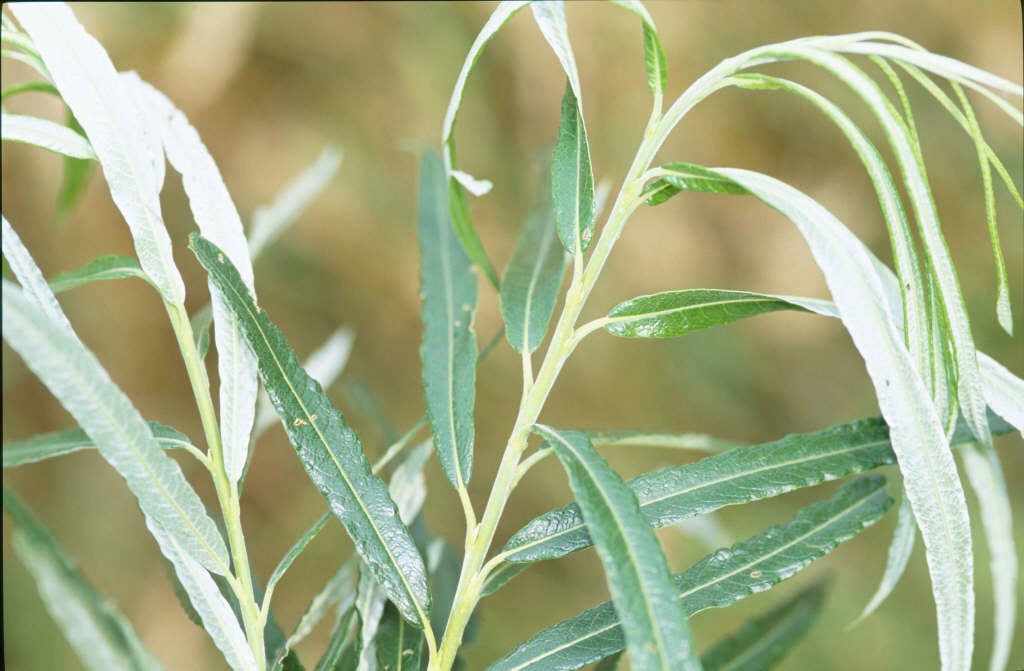Salix viminalis
common osier
A fast-growing large shrub or small tree to 6m tall, with shiny greenish-yellow young shoots and narrow leaves that are silver-hairy beneath; slender greenish catkins open before the leaves, in late winter

Buy this plant
Size
Ultimate height
4–8 metresTime to ultimate height
2–5 yearsUltimate spread
2.5–4 metresGrowing conditions
Moisture
Moist but well–drainedpH
Acid, NeutralColour & scent
| Stem | Flower | Foliage | Fruit | |
| Spring | Green | |||
|---|---|---|---|---|
| Summer | Green | |||
| Autumn | ||||
| Winter | Green |
Position
- Full sun
Aspect
South–facing
Exposure
Exposed or Sheltered Hardiness
H7Botanical details
- Family
- Salicaceae
- Native to GB / Ireland
- Yes
- Foliage
- Deciduous
- Habit
- Bushy
- Genus
Salix are deciduous shrubs and trees of diverse habit, with simple leaves and tiny flowers in catkins, male and female usually on separate plants. Some are valued for their brightly coloured winter shoots, others for their foliage or showy male catkins
- Name status
Correct
- Plant range
- Eurasia
How to grow
Cultivation
Grows in most moist soils except those that are alkaline. A position in full sun is ideal
Propagation
Propagate by greenwood cuttings or by hardwood cuttings in winter
Suggested planting locations and garden types
- Cottage and informal garden
- Coastal
- Wildlife gardens
- Flower borders and beds
Pruning
Pests
May be susceptible to aphids and caterpillars
Diseases
May be susceptible to willow anthracnose, scab, canker and rust
Love gardening
Sign up to receive regular gardening tips, inspiration, offers and more
View our Privacy Policy
Get involved
The Royal Horticultural Society is the UK’s leading gardening charity. We aim to enrich everyone’s life through plants, and make the UK a greener and more beautiful place.